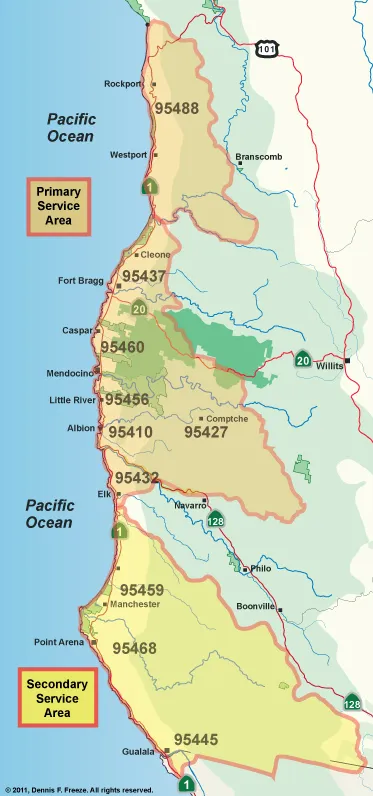About Us
Our Purpose
The purpose of the Mendocino Coast Health Care District has been and continues to be to ensure the continuity of essential health care in the remote communities on the Mendocino Coast.
Special Hospital Districts
In the aftermath of World War II, California faced a severe shortage of hospital beds and most rural areas had almost no access to basic hospital and health care services.[1] In response, the California legislature enacted the Local Hospital District Law that allowed communities to create a new government entity, a special hospital district, that had the power to impose property taxes, issue debt, hire staff and so on in order to provide acute care. The legislature amended this law in 1994 and renamed these special districts as “health care districts”, reflecting that health care was increasingly being provided outside of the hospital setting.

The first step in creating these new districts was for a group of community members to petition the county Board of Supervisors to submit a ballot measure to the voters. Residents within the proposed district boundaries would then approve the formation of the district with interim Directors appointed by the Board of Supervisors. At the next opportunity, members of the five-person Board of Directors would be directly elected by the people. By 1985 and a number of legislative changes, creation of new healthcare districts became the responsibility of Local Agency Formation Commissions (LAFCOs).
The Mendocino Coast Health Care District (the “District”), which stretches from Westport in the north to Gualala in the south, was formed on January 1, 1967. The District then constructed an Acute Care Hospital which was dedicated on June 26, 1971. The original facility is still in operation today, nearly 50 year later. The hospital has 49 licensed beds.[2] However, as will be explained, Critical Access Hospitals like our Coast hospital are limited to using only 25 acute care beds.
